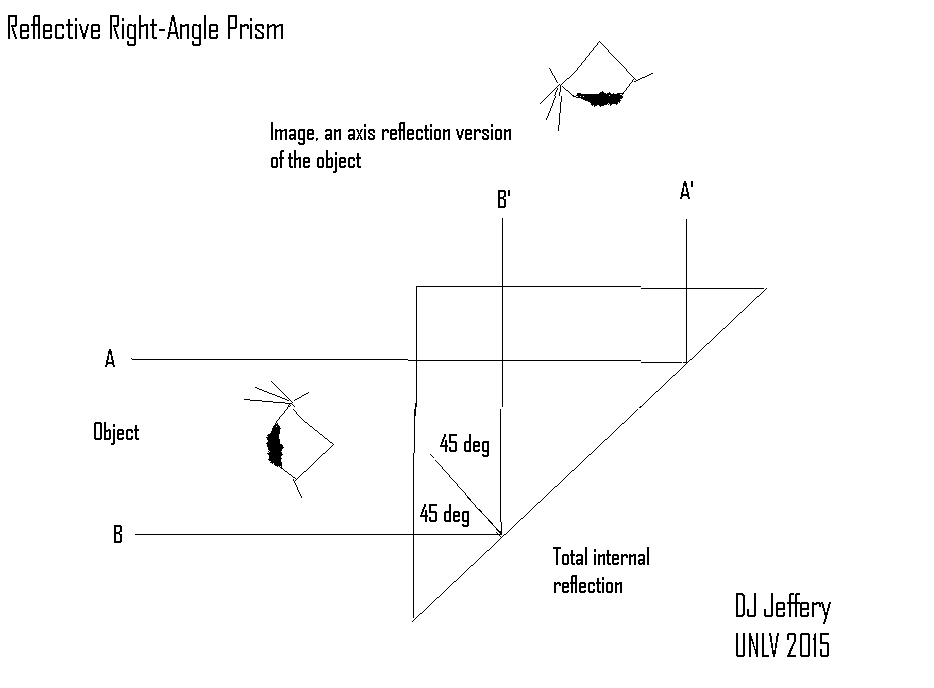
Caption: A schematic diagram of a Porro prism viewed in cross section.
Features:
- A Porro prism
(in cross section
as seen in the diagram) is
a right-triangle
isosceles triangle:
i.e., is a right triangle
with two 45° angles.
- The common usage for
a Porro prism
is to give
1
total internal reflection
using the long side of the prism
(as illustrated in the diagram) or
to give
2
total internal reflections
using the 2
short sides of the prism.
Total internal reflection reflectivity is usually high compared to ordinary mirrors (see Wikipedia: Total internal reflection: Applications). The higher the reflectivity, the less light is absorbed in the reflection process.
- In the diagram,
the reflection
is, in fact, a
plane reflection
with the plane
being the long side of the prism.
The reflection plane is perpendicular to the symmetry plane of the prism which is also the plane of the diagram.
- The plane reflection
plus the rotation of the observer
(illustrated by an eye)
results in the peculiar
mirror inversion
the observer sees.
It's mirror inversion
around the
horizontal diameter
of the
field of view (FOV)
as the observer would see it.
So A is above B without the Porro prism and B' is above A' with the Porro prism.
Of course, the observer could put A' above B' just by rotating their eye around the vertical by 180°.
- The plane reflection inversion
is actually the intrinsic inversion independent of the observer orientation.
It is a front to back inversion about the
reflection plane.
The behavior of
plane reflection
plus observer orientation giving
mirror inversion
is explicated in figure
optics_reflection_plane.html.
- Porro prism
are used in some star diagonals
such as those that come with
Celestron C8 telescopes.
One could use a plane mirror to do the reflection in a star diagonal. But the high reflectivity of the Porro prism usually makes it the preferred choice.
- A Porro prism
(or something similar)
that uses the short sides to create
2
plane reflections
is used in some binoculars.
Image link: Itself.
Local file: local link: optics_prism_porro.html.
File: Optics file: optics_prism_porro.html.